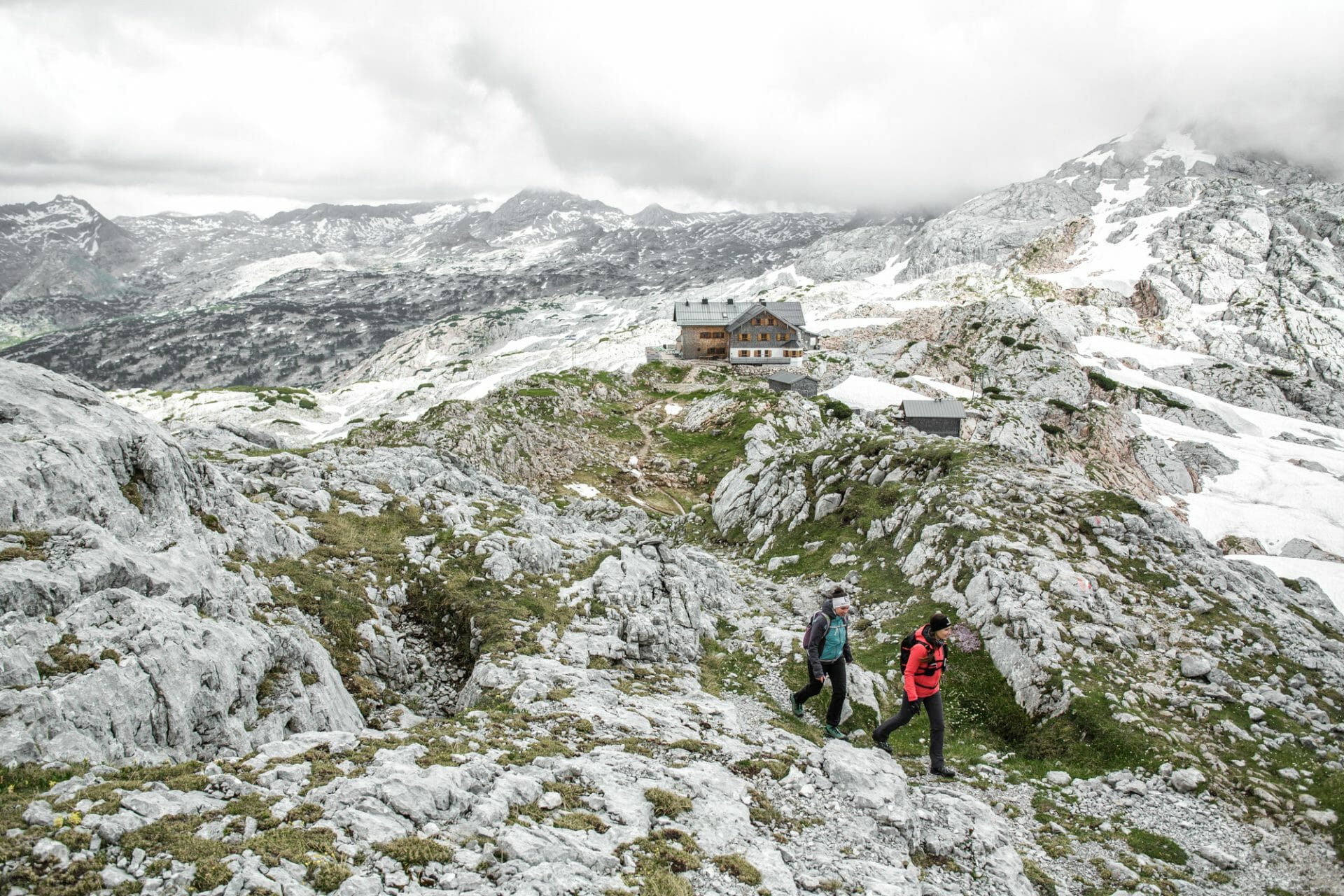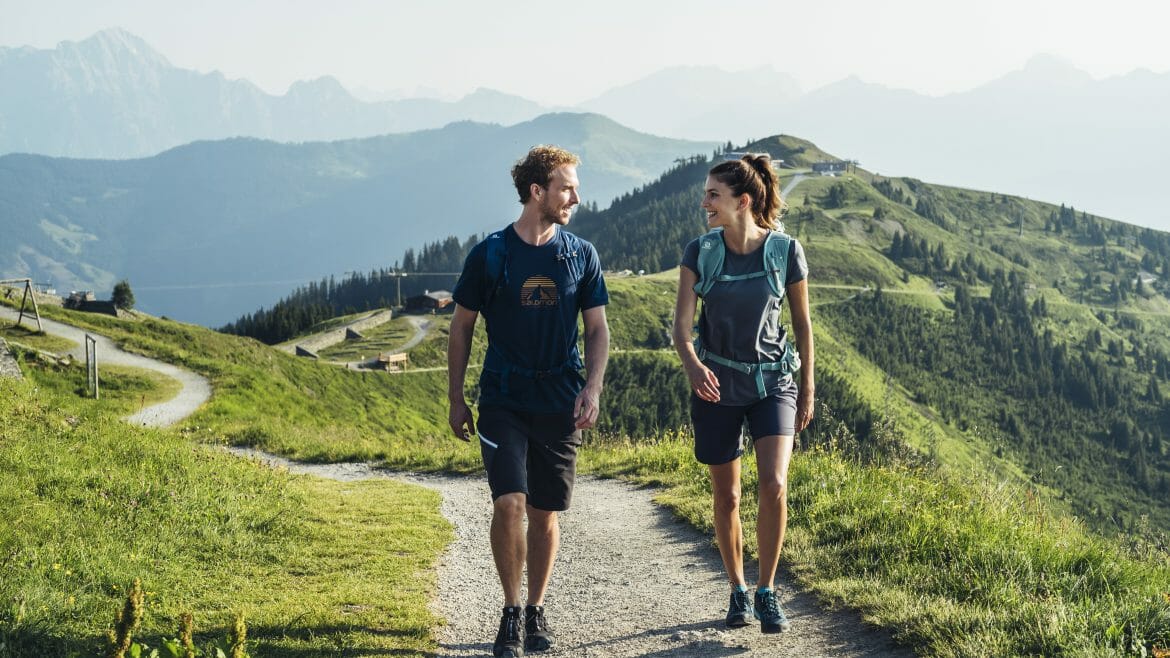
Safety on the mountain is essential! How good is it once you finally have the backpack on and are already into a tour? Slowly, the sounds of everyday life and civilization fade away and are replaced by the noise of the wind and the streams, birdsong and the creaking of one’s own steps. Tours on the mountains work like fountains of youth and metre by metre help to leave the stress of the 21st century behind. Finally, feeling free with no disturbing thoughts that plague us, but just being in the here and now and enjoying life with all your senses.
No wonder then, that more and more people are attracted into the mountains, hunting for just this feeling and to find their fulfilment. But as so often in life, there is not only black and white, but a few rules that you must observe and follow.
How do you prepare for tours in the mountains?
Fitness and experience
Overestimation of one’s capabilities and those of other members of the troupe, does not belong on the mountains! How is one’s fitness and experience, is your stamina enough for the planned tour and do you need to be surefooted and have a head for heights on the planned route?
One thing we must never forget here – it is always better to turn around and get back home safe than to continue a tour that you are simply not suitable for.
Exact planning
Planning is certainly just as important as the appraisal of one’s own suitability. Maps and tour descriptions can be very helpful, but you can also draw on information from Alpine clubs and locals, including the hut owners as well.
It is important to once again check the weather before heading up into the mountains. Nothing can spoil a day on the go, like a sudden change of weather.
Equipment and clothing
Always pay attention to the appropriate equipment and clothing, especially solid, high shoes with non-slip soles, as well as rain and cold protection are very important. It is always better to tell badly prepared tourists in the mountains about the dangers of poor equipment, than to belong to them.
What must we consider when on the go?
Checking out and back in
Regardless of how long or hard the tour is, there should always be someone who knows where you are, is waiting for your return and, if necessary, raises the alarm if this does not happen at the agreed time. This can be friends, family, but also the hut or bed and breakfast hosts.
The pace
The speed and the length of each stage must be adapted to the weakest link in the group. Especially at the beginning of the tour, pay special attention to walking slowly. Be sure to observe other participants to ensure that exhaustion can be detected in time.
Marked trails
The Alpine areas should not be underestimated. You are only really safely on the go, when you do not leave the marked paths. Use extreme caution when walking on steep grass slopes, especially when wet. The crossing of steep snow fields or glaciers is particularly dangerous.

© SalzburgerLand Tourismus – the pleasure of a mountain tour is often boundless, however safety must always take first place.
Avoid falling rocks
Do not dislodge stones! Because even a small stone can do a lot of damage further down. If it should happen, please warn the other walkers immediately and clearly. Cross areas where falling rocks occur individually, quickly and without stopping.
Sudden weather changes
For summer hikes, it is advisable to get up early. On the one hand, this helps avoid the big midday heat while ascending, and on the other hand there are often fierce storms in the afternoon which can become a great danger on a mountain tour. If you should be surprised by a thunderstorm while on the mountain and can no longer find a hut or refuge, move away from exposed areas (peaks, ridges, and exposed surfaces), water-bearing gullies and any steel cables or securings. Avoid isolated trees and take a crouching, balled up stance with closed feet. Always have a charged phone in your backpack!
Accident
If an accident occurs, keep calm. In some cases, you can help yourself. If not, try calling for help by phone, shouting, with lights or waving with large pieces of clothing. An injured person should generally not be moved from the accident site and must never be left alone.
Other rules of conduct
Waste
The wonderful mountains and alpine pastures of SalzburgerLand must remain unspoilt for future generations, just as we experience it today. Therefore, it is absolutely clear that waste brought up must be taken back down to the valley. Help preserve the flora as much as possible.
Behaviour toward animals on the mountain pastures
On the mountain pastures there are cows, calves, sheep, horses, etc. Don’t annoy the animals, but behave “normally” and show no fear. Stay on the Alpine trails and keep your distance from animals.
Dogs
Dogs should always be kept on a lead. Dogs absolutely must not be allowed to ‘hunt’ the grazing animals, mother cows are especially anxious for their calves. Should the dog however be attacked by a grazing animal, you may allow it to run for its own safety.
Have we awoken your interest in stories from SalzburgerLand? In the free Alpine Summer Brochure, you will find the most beautiful Alpine Summer Festivals and everything you need to know about the Alpine Summer in SalzburgerLand’s 175 top-class Alpine Summer huts.

